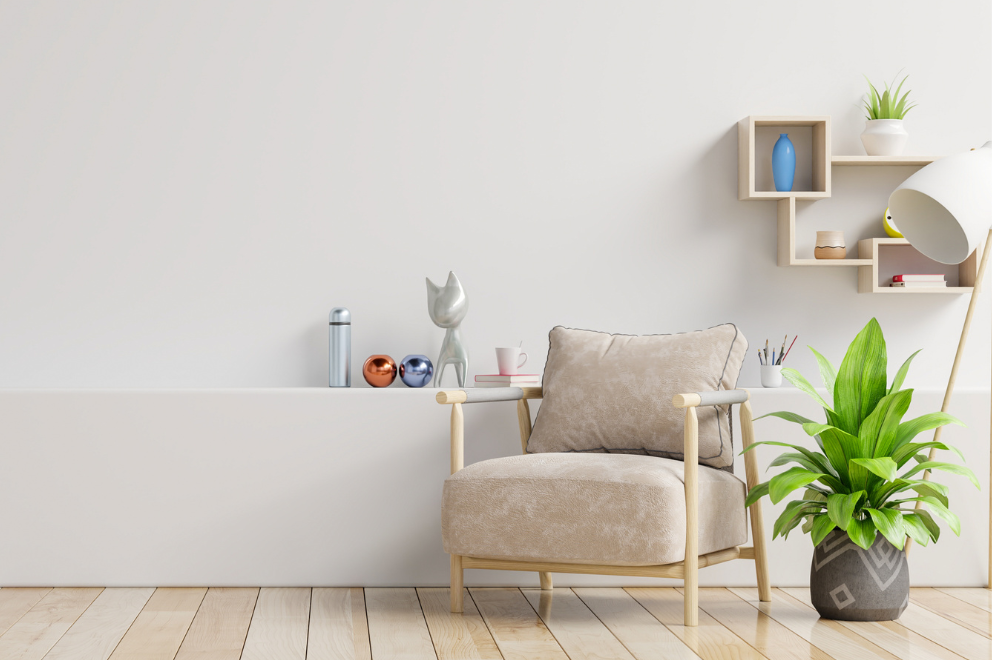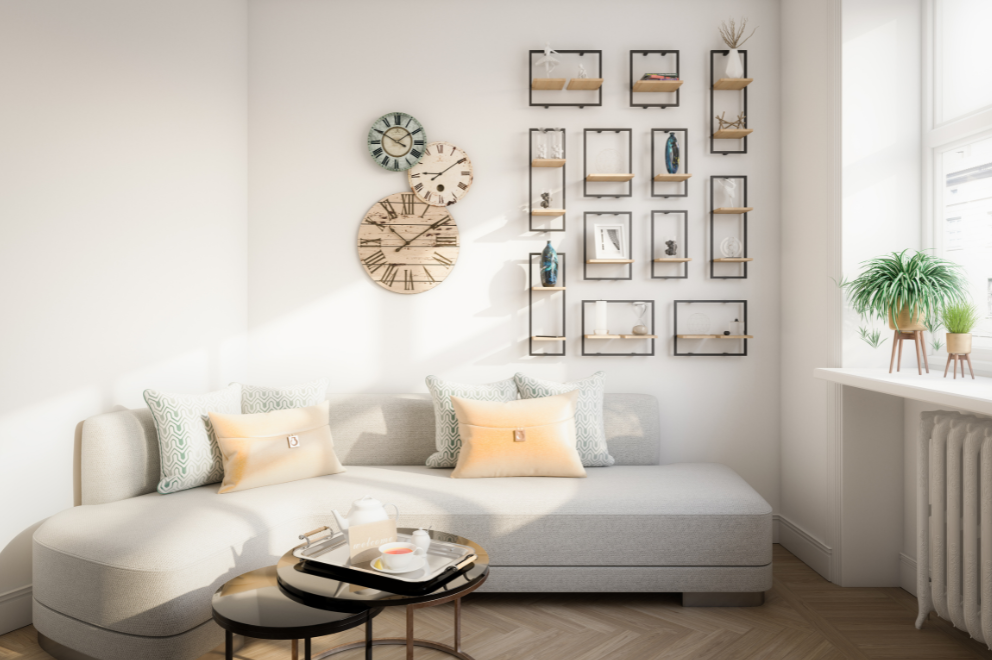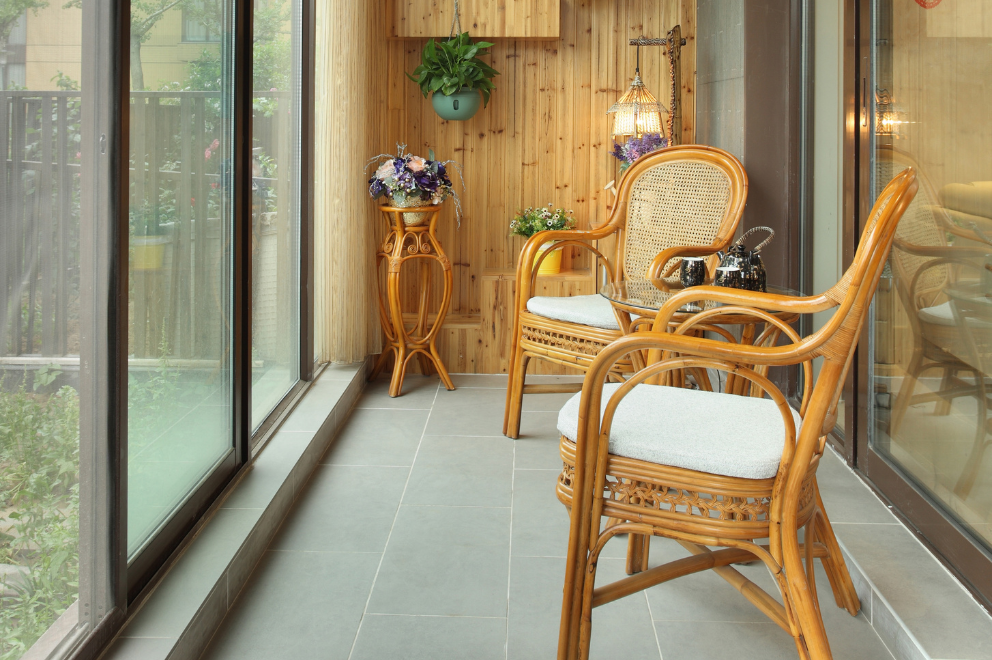
Are you tired of looking at the same old living room decor every day? Wondering if it’s time for a change but not sure when or how often to change home decor to keep things fresh?
Keeping your home decor updated isn’t just about following trends—it can significantly impact how you feel and function in your own space.
Whether you’re a homeowner, a real estate agent, or an interior design enthusiast, understanding the best times and reasons to update your home decor can make all the difference in maintaining a space that feels alive, welcoming, and personal.
This guide will explore how often to change home decor, the signs it’s time for a refresh, and tips for making updates without breaking the bank.
Let’s dive in and discover how frequently you should be redecorating your space.

Home is where the heart is, but even the heart needs a change sometimes. Updating your home decor isn’t just about making things look good; it’s about how your space makes you feel. The environment you live in can affect your mood, your energy levels, and even how you interact with your loved ones.
A fresh, new look can lift your spirits, reduce stress, and make your home feel more comforting and inviting. Think about how nice it feels to walk into a room that looks and feels just right—it’s like a little boost for your day. Knowing how often to change home decor can help you maintain this positive feeling.
Keeping your decor updated also helps your home stay stylish and modern. Home decor trends change, and what was trendy a few years ago might not feel so fresh today.
By making small updates regularly, you can keep your space looking current, which not only makes you feel good but also impresses visitors.
Practicality and comfort are big reasons to consider updating your home decor, too. As life changes—maybe you’ve started working from home, had kids, or picked up a new hobby—your home needs to change with you.
Rearranging your space or getting new furniture that better fits your current lifestyle can make daily life more comfortable and enjoyable. A home that fits your needs and feels comfortable is a home where you can truly relax and be yourself.
In the end, updating your home decor is about creating a space that reflects who you are and what makes you happy.

Several factors can influence how often to change home decor to keep your space feeling fresh and comfortable. Understanding these factors can help you plan your redecorating projects more effectively:
Our tastes and preferences change over time. What you loved five years ago might not appeal to you anymore. As your personal style evolves, updating your home decor can help reflect the current ‘you.’ This ensures your home always feels like it truly belongs to you.
Major life events such as getting married, having children, or kids leaving for college can significantly impact your decor needs. A newlywed couple might want to personalize their space, while a growing family might need more child-friendly furniture and decor. Even empty nesters may seek to repurpose a bedroom into a home office or hobby room.
Different seasons bring different vibes. You may feel the need to switch out your decor to match the time of year—light, bright colors for summer, and warm, cozy tones for winter. Additionally, cultural traditions and holidays can inspire temporary or permanent changes in home decor, like festive decorations or seasonal table settings.
Home decor trends change frequently, much like fashion. While it’s not necessary to follow every trend, incorporating a few trendy elements can make your home feel up-to-date and stylish. A few modern touches here and there can keep your space feeling fresh.
Over time, furniture, fabrics, and decor items can show signs of wear and tear. Faded upholstery, scratched furniture, or outdated paint colors can make a space look tired and neglected, prompting the need for an update. Regularly assessing your home’s condition can help you decide when it’s time for a refresh.
Changes in how you use a space might require updates to your home decor. For instance, if you start working from home more often, you might need to create a dedicated and well-decorated home office area. Similarly, aging in place or accommodating a disability might call for functional changes in decor and layout, such as installing grab bars or rearranging furniture for better accessibility.
If you’re planning to sell your home, updating your decor can increase its appeal to potential buyers. Fresh, modern decor can make a home more attractive and potentially increase its market value. Knowing how often to change home decor can help you keep your home market-ready.
Sometimes, environmental factors like humidity, sunlight exposure, and temperature changes can cause decor elements to deteriorate faster, necessitating more frequent updates. For instance, sun exposure can fade fabrics and artwork, while humidity can damage wood furniture.
The integration of smart home technology often requires decor changes. New gadgets, lighting systems, and smart furniture can make your home more functional and can inspire a whole new look that complements these innovations. Incorporating tech-friendly designs can keep your home both stylish and up-to-date.

Wondering if it’s time to change your home decor? Here are a few signs to look out for:

Updating your home decor doesn’t mean you have to gut everything and start from scratch. Often, it’s the small tweaks that make the most noticeable difference. Here are some easy, budget-friendly tips to refresh your space without overhauling everything:
Think of accessories like jewelry for your room—they can transform the vibe without much effort. Swap out throw pillows, blankets, rugs, or lampshades to introduce new colors and textures. Even smaller items like vases, picture frames, or candles can bring a fresh, seasonal feel.
Use contrasting colors to make accessories pop. If your sofa is neutral, try adding vibrant, bold pillows for a quick, eye-catching update.
Sometimes, all it takes is moving things around. Rearranging your furniture can make a room feel new and even improve how you use the space. Try different layouts to see what feels best and enhances the room’s flow.
Focus on creating cozy conversation areas, keep pathways clear, and maximize natural light.
Changing your wall decor is a simple way to breathe new life into a room. Try creating a gallery wall with a mix of artwork, family photos, and decorative mirrors. Updating outdated prints with new ones that match your current color scheme is another easy fix.
Use interchangeable frames so you can swap out art and photos easily whenever you’re in the mood for a change.
Lighting plays a huge role in setting the mood of a space. Adding a new floor lamp, table lamp, or pendant light can change the ambiance instantly. Consider replacing outdated fixtures or adding dimmers for better control over the room’s feel.
Use LED bulbs in warm or cool shades to customize the lighting based on the room’s purpose. Warm lights are great for cozy areas, while cool lights work well in kitchens or workspaces.
Plants are a simple, affordable way to liven up your home. From large potted plants to small succulents, greenery adds life and can improve your mood. Plus, plants have the added benefit of purifying the air.
If you’re new to plants or short on time, choose low-maintenance options like snake plants or pothos.
Swapping out curtains, bed linens, and cushion covers can give any room a fresh new look. Experiment with different textures and colors to create a cozy, inviting atmosphere that fits the season.
Layering different textures, like adding a knitted throw over a cotton bedspread, can add depth and coziness to your space.
Get creative with do-it-yourself projects. Painting an old piece of furniture or using removable wallpaper to create an accent wall can make a big difference. Upcycling items you already have is another great way to refresh your decor and be eco-friendly.
Visit local thrift stores or check online marketplaces for affordable pieces that can be easily upcycled with a bit of creativity.
Changing the hardware on cabinets and drawers is a simple yet impactful update. New knobs, handles, or faucets can instantly modernize a kitchen or bathroom without a full renovation.
Choose hardware finishes that complement your home’s style, like brushed nickel for a modern look or antique brass for a classic

Decorating your home is exciting and fun, but it’s easy to make mistakes that can affect how your space looks and feels. Whether you’re new to decorating or have been doing it for years, avoiding these common home decor mistakes can help you create a home that’s both stylish and functional.
A room should be more than just pretty—it needs to work for your daily life too. Sometimes, we focus so much on making a room look nice that we forget about how practical it needs to be. For example, a beautifully arranged living room isn’t helpful if it doesn’t have enough comfortable seating for everyone.
Before you start decorating, think about how you use the room. Make sure the layout allows for easy movement and meets your needs, like having enough seating or storage.
Trends come and go quickly. It’s tempting to fill your home with the latest styles, but this can make your decor look dated in just a few years. Instead of focusing on trends for big items, use them for small, easy-to-change accessories.
Stick to timeless pieces for big items like sofas and tables. Use trendy elements like pillows, rugs, or artwork that you can swap out easily when you want a change.
Color has a huge impact on how a room feels. Picking paint colors first can limit your choices and make it harder to find furniture and decor that matches.
Start with your main furniture pieces, then choose a paint color that complements them. Use a color wheel to find colors that work well together for a balanced look.
Lighting can make or break a room’s atmosphere. Relying only on one type of lighting, like overhead lights, can make a room feel harsh or dim.
Use different types of lighting, such as table lamps, floor lamps, and wall lights, to create a warm, inviting atmosphere. Add dimmer switches for more control over the lighting.
Pushing all your furniture against the walls might seem like it makes the room feel bigger, but it often does the opposite. It can make a room feel empty and uninviting.
Try pulling furniture away from the walls to create cozy, intimate seating areas. Use rugs to define different spaces within a room.
Buying furniture without measuring your space can lead to awkward setups. A sofa that’s too big for a room or a rug that’s too small can throw off the balance of your decor.
Measure your space before shopping. Consider how each piece will fit in the room and create a floor plan to visualize the layout.
Your home should feel like you, not just a showroom. Copying a look from a magazine or Pinterest without adding your own touches can make your space feel impersonal.
Incorporate items that have personal meaning, like family photos, travel souvenirs, or handmade crafts. Mix different styles that reflect your personality.
Small details, like hardware or fabric quality, can make a big difference in the overall look of a room. Ignoring these details can make your decor feel unfinished.
Update things like door handles, drawer pulls, and light fixtures to match your decor style. Choose quality fabrics for curtains, pillows, and upholstery to add a polished touch.
It’s easy to add too much decor, which can make a room feel cluttered and overwhelming. Too many accessories or furniture pieces can distract from the overall look.
Embrace the idea that “less is more.” Focus on a few statement pieces that you love and leave some empty space for a balanced look. Regularly edit your decor to keep the space fresh.
Using decor that’s too big or too small for your space can look awkward. For instance, a tiny piece of art on a large wall or an oversized sofa in a small room can easily throw off the balance.
Therefore, choose decor that matches the size of the room. Use larger pieces for big walls, or alternatively, group smaller pieces together for a more balanced look.
It depends on your personal preferences and lifestyle changes. Some people update their decor seasonally, while others do it every few years. Listen to what feels right for you!
Try rearranging your furniture, using what you already have in new ways, or doing some DIY projects. Even small changes, like new throw blankets or a fresh coat of paint, can have a big impact.
Include items that tell your story, like family photos, travel souvenirs, or things that reflect your hobbies. Personal touches make your home feel uniquely yours.
Stick to a consistent color palette and style throughout your home. This creates a unified and harmonious look that feels well put together.
Updating your home decor doesn’t have to be complicated or expensive. By making small changes and avoiding common mistakes, you can effortlessly create a space that feels fresh and uniquely yours. Moreover, focus on what makes you happy, and remember that your home should always be a place where you feel comfortable and relaxed. Enjoy the process of decorating, and let your personal style shine through!

James Sullivan, an architect with a degree from the University of Texas, has focused on sustainable beach house designs since 2013. He joined our team in 2020, weaving his expertise into articles that emphasize harmony with nature. James enjoys scuba diving during his weekends.

Hi there! I’m Aisha Harper. With a background in exploring breathtaking destinations and a deep appreciation for creating warm, inviting spaces, I’ve combined my passion for adventure and home into a fulfilling career. From scaling mountains to styling living rooms, I love blending the thrill of the outdoors with the comfort of home, inspiring others to do the same.